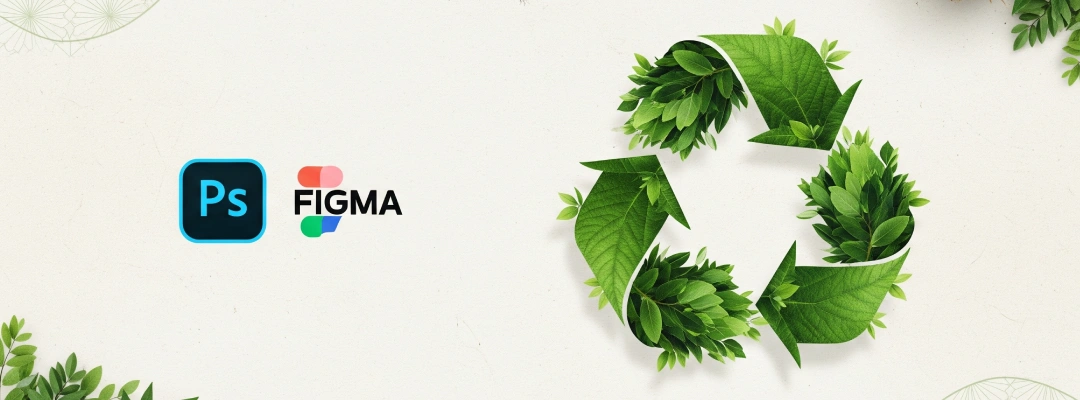Introduction 🌍
World Environment Day, celebrated every June 5, is a global call to action for environmental protection. This year’s focus is on combating plastic pollution—a crisis costing economies $300–600 billion annually while leaking 11 million tonnes of plastic into oceans each year.
For brands and agencies, this is more than a seasonal theme—it’s an opportunity to stand for sustainability and inspire change through thoughtful design.
Why This Topic Matters
Sustainability in graphic design isn’t just ethically responsible—it’s also strategically savvy:
- 72 % of consumers now prefer eco‑friendly products and brands .
- Designers’ decisions—from paper stock to digital energy use—have measurable environmental impact.
- Aligning campaigns with World Environment Day boosts brand reputation and audience engagement.
For an integrated marketing agency in Mumbai and across integrated marketing agency in India, leading with sustainability showcases leadership in both creativity and responsibility.
1. Choose Sustainable Materials & Printing Methods
- Use recycled or FSC-certified paper. Though 30 % pricier, sustainable stock costs will fall as demand grows.
- Opt for soy or vegetable‑based inks, which reduce VOC emissions vs. petroleum‑based alternatives.
- Limit print volume; embrace digital publishing—but be mindful of server energy use.
2. Design for Longevity & Reusability
- Create modular designs and templates to update annually, reducing waste.
- Avoid disposable giveaways—choose items that live on.
- Encourage recycling: include eco-messaging and recycling symbols in visuals.
3. Optimize Digital Campaigns for Sustainability
- Leverage lightweight file formats (e.g., SVG, compressed PNGs) to minimize data energy footprint .
- Use dark mode styles to reduce screen energy usage (hivo.co).
- Host content on green data centers powered by renewable energy where possible.
4. Leverage Environmental Storytelling
- Visuals of recycling, forests, wildlife, or regenerative practices resonate deeply on World Environment Day.
- Campaigns like recycled banners with photocatalytic coatings have even improved air quality—equivalent to 700 trees.
- Share local actions: beach cleanups, tree-planting, community workshops.
5. Integrate Brand & Impact
- Clearly state your eco-commitment: “Printed on 100% recycled paper”, “Powered by wind‑energy hosting”.
- Partner with environmental NGOs for credibility and impact.
- Link visuals to call-to-action—now it’s not just pretty, it’s purposeful.
6. Measure and Communicate Impact
- Track key metrics: waste reduced, trees saved, energy saved, digital carbon footprint.
- Present this in post-campaign reports and assets.
- Share results transparently with employees and clients alike—for an integrated marketing agency in India, it builds trust and authority.
Conclusion
Creating eco-friendly design campaigns for World Environment Day isn’t just creative flair—it reflects your values in action. By choosing sustainable materials, designing with longevity, optimizing digital platforms, and connecting your visuals to real-world impact, your campaigns will not only stand out—they’ll make a difference.
Does this interest you? Connect with us to see how we can help you!
FAQs
- What is sustainable graphic design?
Design that minimizes environmental impact through materials, processes, digital optimization, and storytelling. - Are recycled materials cost-effective?
Though ~30% more expensive now, higher adoption by agencies makes long-term costs competitive . - How can digital design be eco-friendly?
By optimizing file sizes, using SVG formats, enabling dark mode, and choosing green hosting . - What visuals work best for World Environment Day?
Nature-inspired, recycling symbols, wildlife imagery, and local action stories. - How can campaigns show real impact?
Use metrics: waste avoided, trees equivalent planted, carbon reduced. - Can banners help the environment?
Yes—innovations like photocatalytic-coated banners have reduced air pollutants, mimicking effects of 700 trees . - What is photocatalytic printing?
A treatment that breaks down pollutants on surfaces using sunlight—used in eco campaigns like at the Guggenheim. - Should sustainable branding be highlighted?
Absolutely—transparency in materials and practices builds brand trust. - Is eco-design only for print?
No—it applies to digital efficiency and narrative impact too. - How do agencies measure digital carbon footprint?
Through server energy use, data transfer volumes, and hosting provider sustainability reports.
Some of the services that Clevertize provides are:
Creative Services, Performance & Digital Media Marketing, Visual Identity & Branding, Campaign Management & Analysis, UI/UX & Website design, Video creation, Media planning & buying, Chatbot & more.
If Return on Investment is critical for you, talk to Clevertize!
Reach out to us at saumya@clevertize.com!





